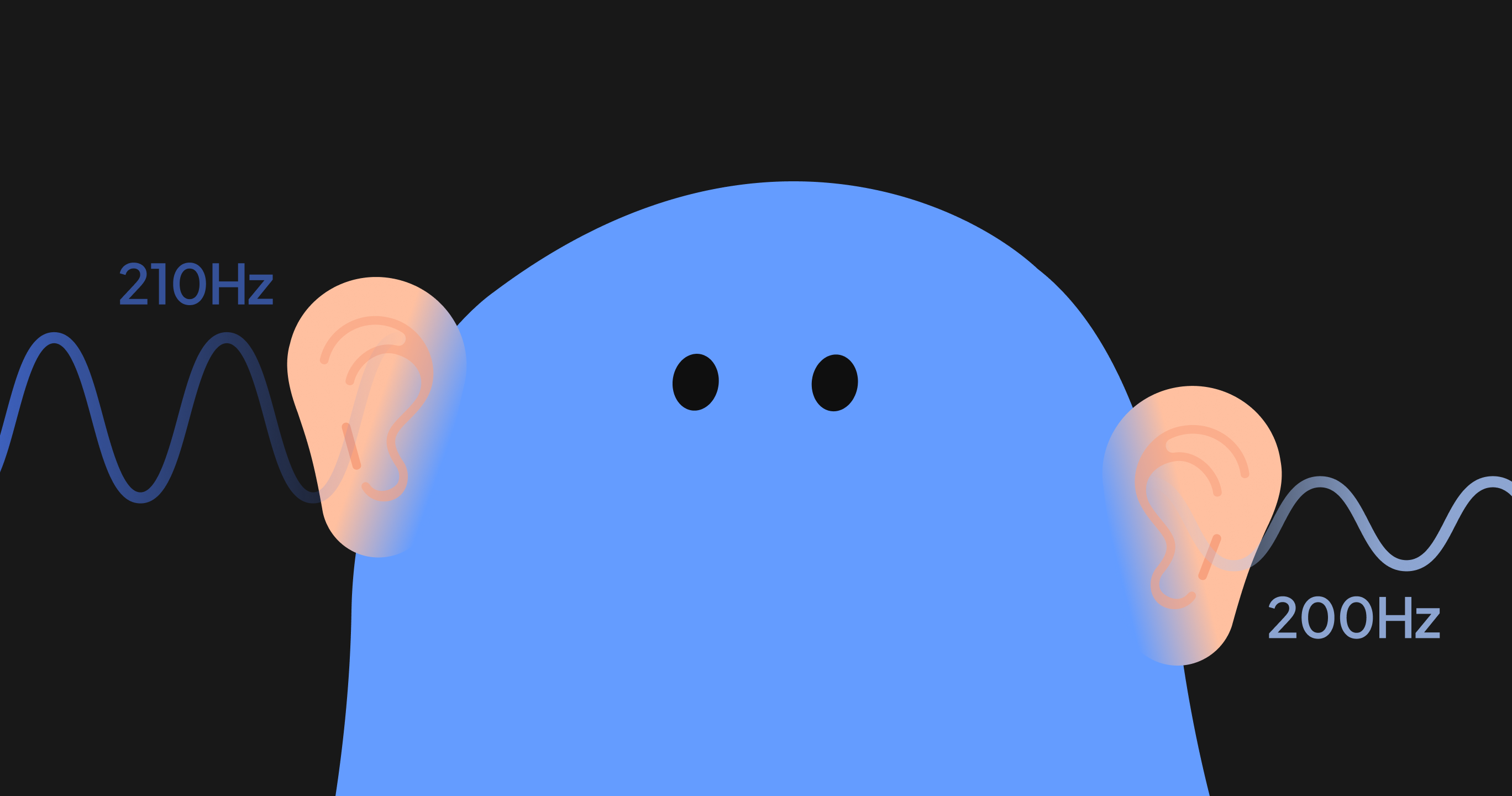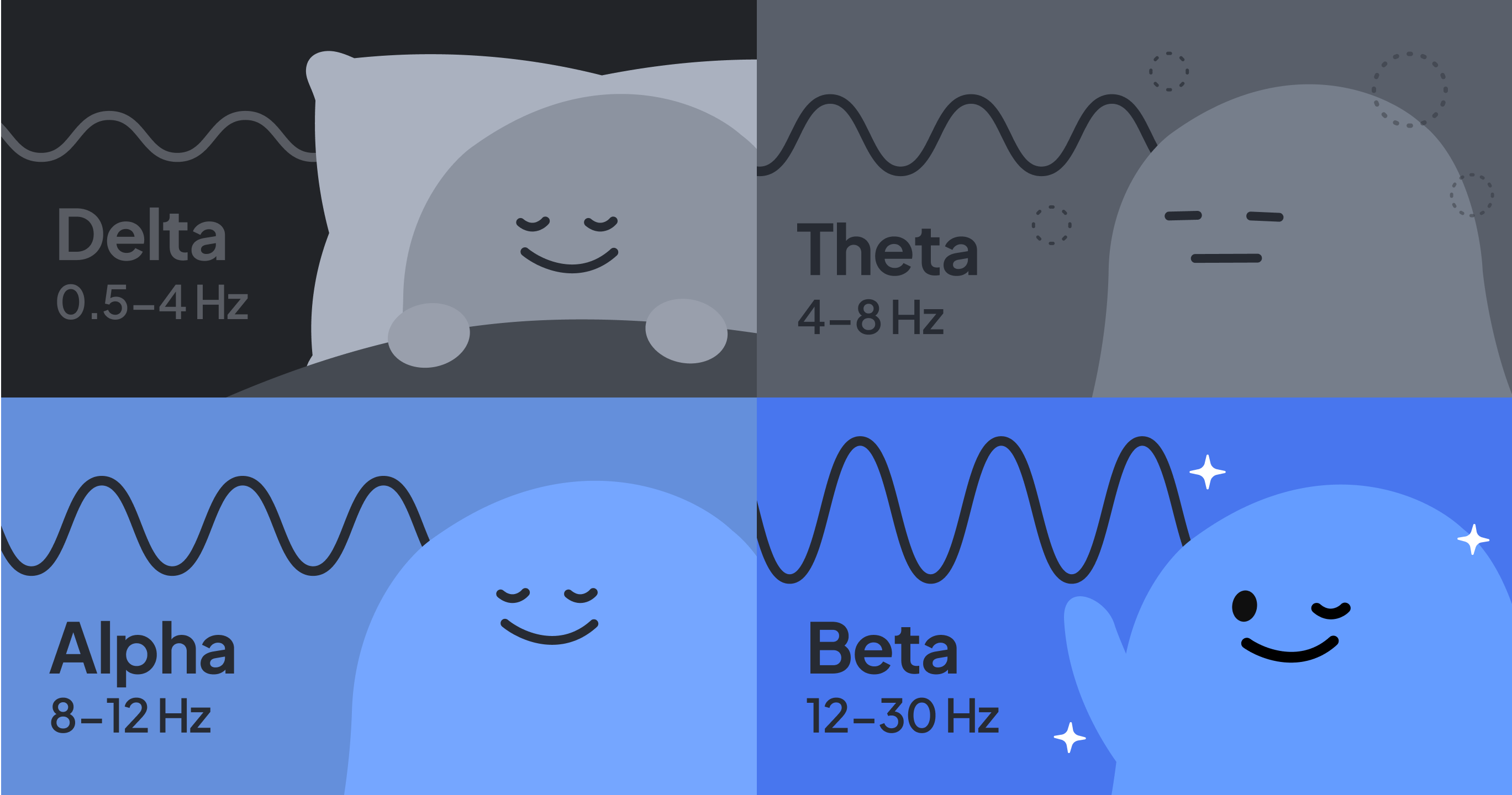What Are Binaural Beats?
A binaural beat is an auditory illusion that occurs when each ear is presented with two tones of slightly different frequencies. For instance, when the left ear hears a 210 Hz tone and the right ear hears a 200 Hz tone, the brain perceives a new rhythmic pulse of 10 Hz—the difference between the two sounds. This perceived 10 Hz rhythm is what we call a binaural beat.

🧠 The Brainwave Entrainment Effect of Binaural Beats
What makes this illusion so fascinating is that it can synchronize with the brain’s own electrical rhythm - its brainwaves. When you listen to a 10 Hz beat, the brain gradually aligns with that same rhythm (the theta range), potentially inducing relaxation, drowsiness, or focus.
This phenomenon, known as brainwave entrainment, was first described in 1839 by German physicist Heinrich Dove 1. Since then, scientists have continued to study how external rhythmic stimuli can synchronize neural oscillations within the brain.
In a classic study, Schwarz & Taylor 2 observed that stimulation with a 40 Hz binaural beat elicited an auditory steady-state response (ASSR), demonstrating that the brain can synchronize to rhythmic auditory input.
Similarly, Ioannou et al. 3 found that both alpha (10 Hz) and delta (1 Hz) binaural-beat stimulation produced a significant increase in alpha-band power in EEG recordings. In another experiment, Jirakittayakorn & Wongsawat 4 reported that exposure to a theta (6 Hz) binaural beat increased theta-band power across nearly all electrode sites in the experimental group, while no significant change was observed in the control group.
Collectively, these findings suggest that binaural beats can temporarily synchronize the brain’s electrical activity within specific frequency bands (alpha, theta, delta). However, the strength and consistency of this effect vary depending on factors such as background noise, sound intensity, and exposure duration 5. In other words, binaural beats do not affect everyone equally—but under certain conditions, they can promote relaxation, focus, or pre-sleep calmness.
Different frequencies of binaural beats are associated with distinct mental and physiological states:
- Delta (0.5 – 4 Hz): deep sleep and physical recovery
- Theta (4 – 8 Hz): drowsiness, relaxation, meditation
- Alpha (8 – 13 Hz): calm focus and mental clarity
- Beta (13 – 30 Hz): alertness and active engagement

Thus, binaural beats are more than “sleep sounds.” They represent an acoustic technology designed to gently guide the brain’s rhythms toward specific states of mind and body.
🌙 Available Now on Nightly
Currently available on iOS only
Nightly builds on these scientific findings with an AI-powered recommendation system that delivers optimized binaural beats every night. By learning each user’s sleep rhythm and physiological state, Nightly finds the most stabilizing frequency combinations for a deeply personalized sleep experience.
When headphones are connected, the app automatically switches to Headphone Mode. You’ll hear gentle rhythmic tones, while your brain and body gradually drift into a deeper state of calm. It’s more than just sound - it’s a rhythm where both mind and body fall asleep together.
Try Nightly’s binaural beats tonight.
